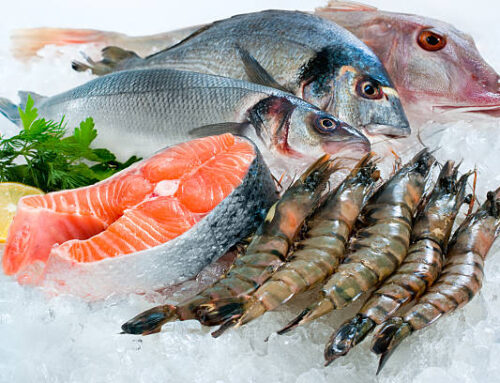Pentasodium Triphosphate E451 (i) is a food additive that has been widely used in the food industry for many years. It is commonly used as a preservative, emulsifier, and stabilizer in various food products.
Chemical formula: Na5P3O10
Molecular weight: 367.86 g/mol
Appearance: White powder or granules
Solubility: Soluble in water, insoluble in organic solvents
pH level: Typically between 9-10 in a 1% solution
Assay: Typically greater than 94% purity
Heavy metals: Less than 0.001% (as lead)
Loss on drying: Less than 1%
Arsenic: Less than 3 mg/kg
Fluoride: Less than 50 mg/kg
Where is the E451(i) from?
E451(i) can be obtained through a chemical synthesis process or by extracting it from naturally occurring minerals. Some common sources include apatite and phosphorite minerals.
What does E451(i) food additive do?
Uses in food products: E451(i) is used in a wide variety of food products, including canned meats and vegetables, processed cheese, dairy products, baked goods, and seafood. It is particularly useful in products that need to maintain their shape, texture, and moisture content over time.
Benefits as a preservative: E451(i) helps to prevent spoilage and bacterial growth in food products, which makes them safer and longer-lasting for consumers. It is also effective in preventing discoloration and oxidation in certain foods.
Emulsifying properties: E451(i) can help to stabilize emulsions, such as oil and water-based salad dressings or sauces. This ensures that the ingredients remain well-mixed and do not separate.
Stabilizing properties: E451(i) is capable of binding to metal ions and other contaminants in food products, which helps to improve their stability and consistency. This makes it particularly useful in processed meats, such as sausages or hot dogs.
What foods contain E451(i)?
 1. Sausages
1. Sausages
2. Hot dogs
3. Deli meats
4. Canned tuna
5. Canned salmon
6. Bread
7. Croissants
8. Donuts
9. Instant noodles
10. Ramen
11. Macaroni and cheese
12. Processed cheese slices
13. Cheese spreads
14. Pizza toppings
15. Meatballs
16. Hamburger patties
17. Frozen chicken nuggets
18. Fish sticks
19. Canned meat products such as Spam
20. Ham and bacon slices
21. Corned beef
22. Beef jerky
23. Pâté
24. Corn dogs
25. Chicken and turkey lunchmeat slices
Is E451(i) food additive safe?
E451(i), or sodium tripolyphosphate, is considered safe for consumption in the quantities found in food products by regulatory agencies such as the FDA and EFSA. It has been extensively studied and its safety has been evaluated based on scientific evidence.
However, like all food additives, E451(i) should be consumed in moderation as excessive consumption of any food additive may have negative health effects.
Overall, E451(i) is considered safe for use in food products at levels consistent with good manufacturing practices. Its use plays an important role in preserving the quality and safety of many food products we consume on a daily basis.




